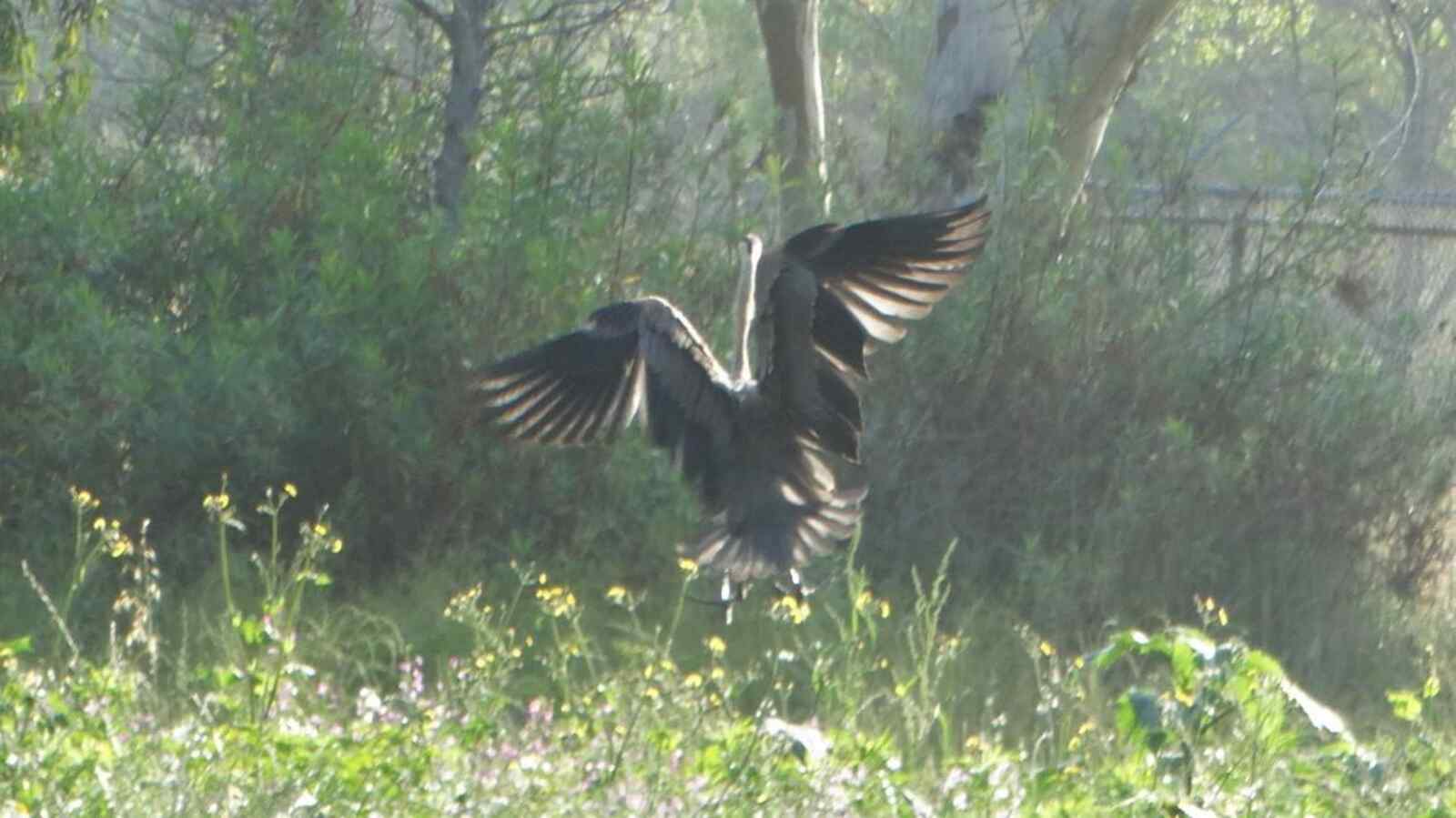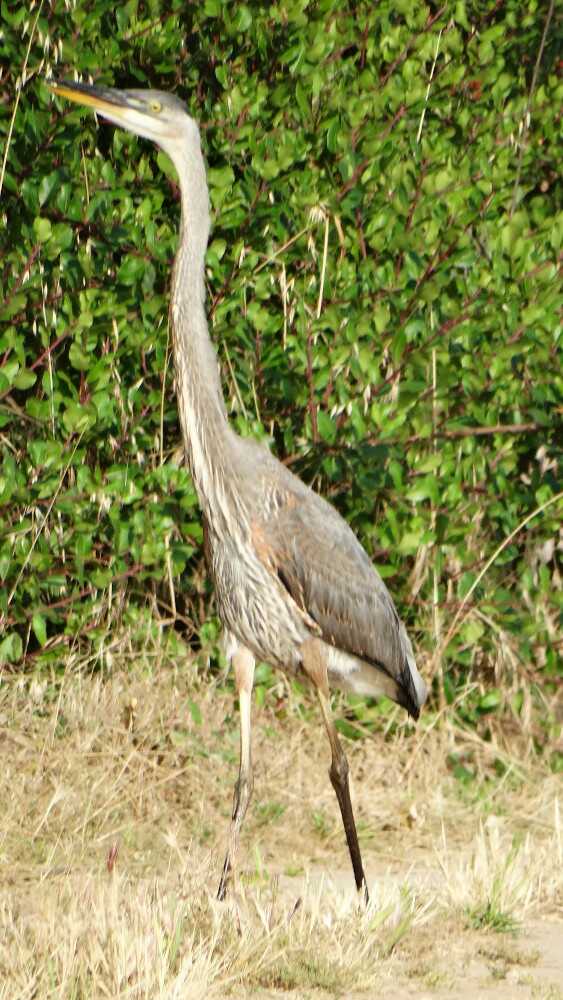
Quiz for Aug 2023
Quiz kindly prepared by Calvin.
INCOMING! This bird is flying away from us, wings splayed as if to land perhaps. But field guides don’t typically show this angle in their plates. This photo was taken in the middle of June in the LA Basin. Good luck!
Answer will be displayed on September 1.
Answer:
Since it is June, this immediately narrows the possibilities down to birds that are breeding in the LA Basin. Migration has largely slowed by this point, with a few stragglers headed north at the beginning of the month, and possibly some post-breeding birds moving in the area by the month’s end, but the majority of birds are in some stage of the breeding cycle in mid-June.
We get the impression of a larger, non-passerine bird if you use the trees and grasses in the frame to roughly judge size. By finding this bird’s long head and neck, and un-webbed toes just visible under the tail feathers, we can narrow it down to the heron and egret family, the only ones in our region to display long necks and narrow un-webbed feet. In June, that leaves Great and Snowy Egrets, Black-crowned and Yellow-crowned Night-Herons, and Green and Great Blue Herons. The egrets can be ruled out based on the dark coloration of the bird, and Green Herons do not have a long skinny neck or this dark coloration. Night-herons can stretch their necks out when alarmed, so this is not as wild of a guess as it might seem at first thought. Adult Black-crowned do have a two-toned blackish-on-gray combination, however this effect is created from having a black back, and all pale gray wings, not the two-toned wing panel seen here on this bird. Juvenile Yellow-crowned can exhibit a two-toned wing, but with darkish gray primaries and secondaries and brown coverts, not seen here. Additionally both night-herons have yellowish or greenish feet, not the black feet seen here.
This leaves us with a Great Blue Heron. While this might have been obvious to some people at the start, I really liked how this photo required us to use field marks that aren’t appreciated well in the field on a front facing, still, and abundant Great Blue. How many of us have noticed how the dark primaries and secondaries contrast with the pale gray coverts on the massive wings of a Great Blue? I sure didn’t, always using the bird’s massive size and shape in the field as the first (and only) field mark needed for an ID. But as I was scrolling through my pictures, I did a double-take upon seeing this awkward and almost goofy in-focus flight shot of a Great Blue Heron. Keen eyed observers can cinch the ID by noticing the pale gray neck with a touch of a black crown showing on top.

This Great Blue Heron was photographed at Madrona Marsh on June 17, 2023. This individual is actually not an adult bird, which would have been difficult to determine from this picture alone, but given this picture below, the browner and streakier breast, and brown feathers mixed with gray in the back and wing indicate this to be a younger bird.
Congratulations to Andrew, Charles, Henry M., Joel, Lily, and someone calling themselves “Long-tailed Sylph” for getting Great Blue Heron correct!